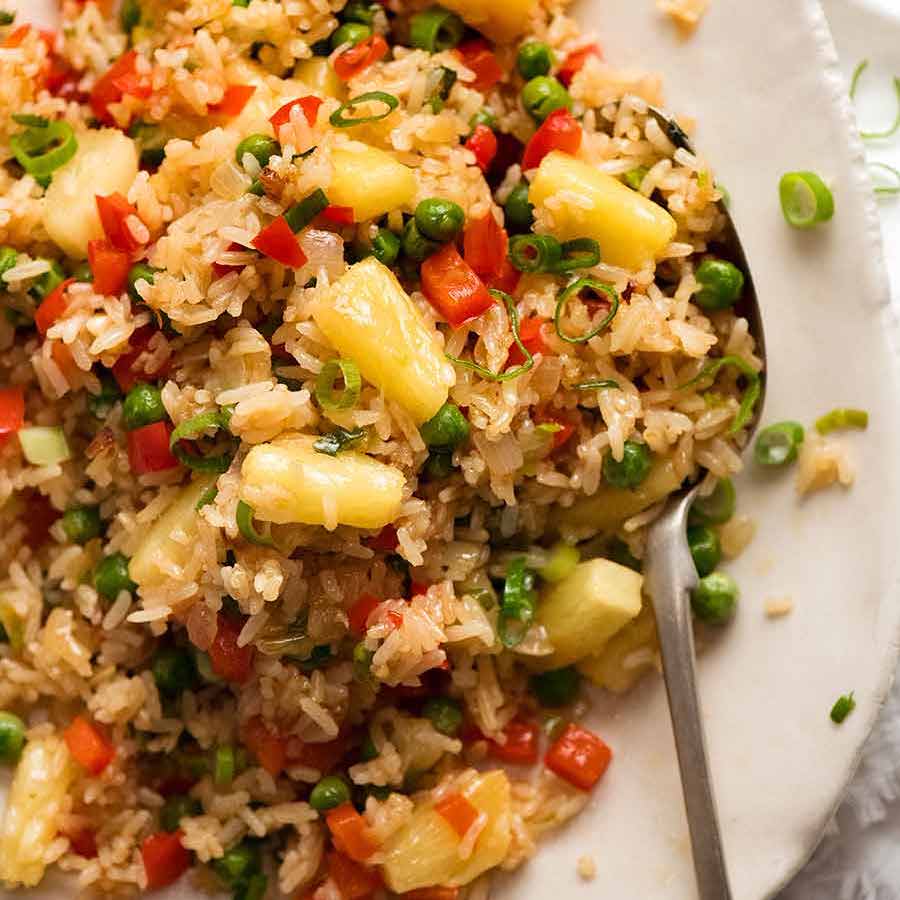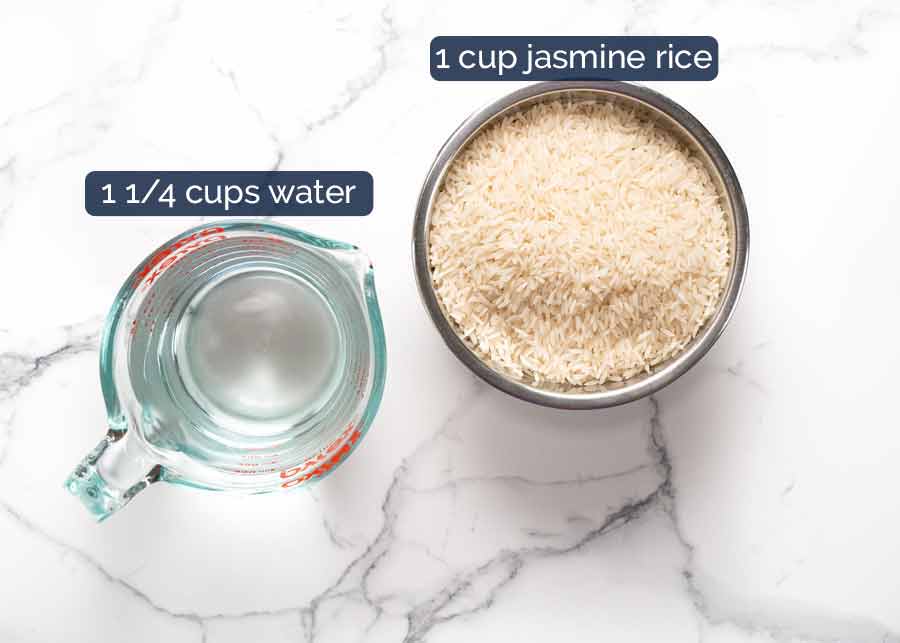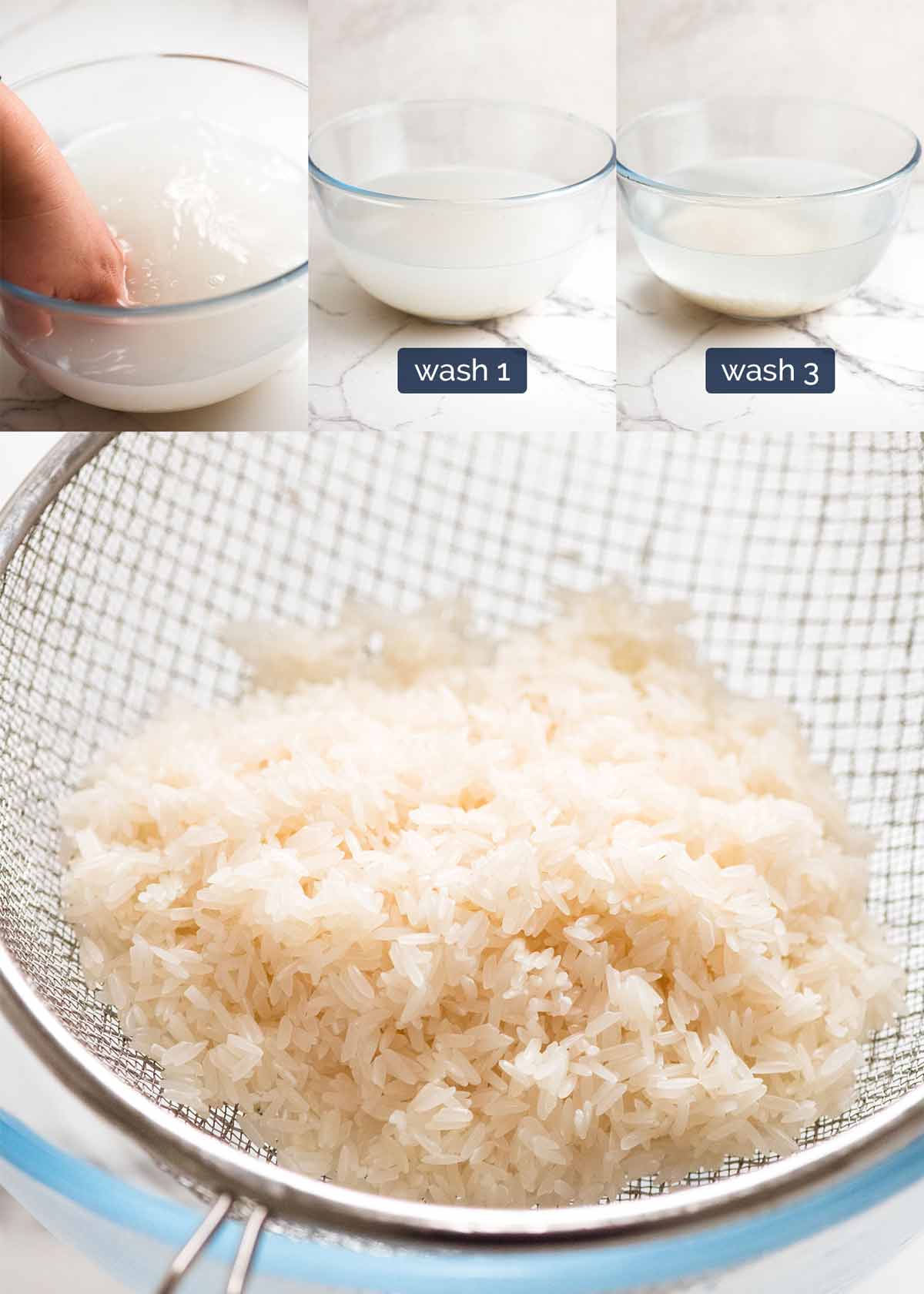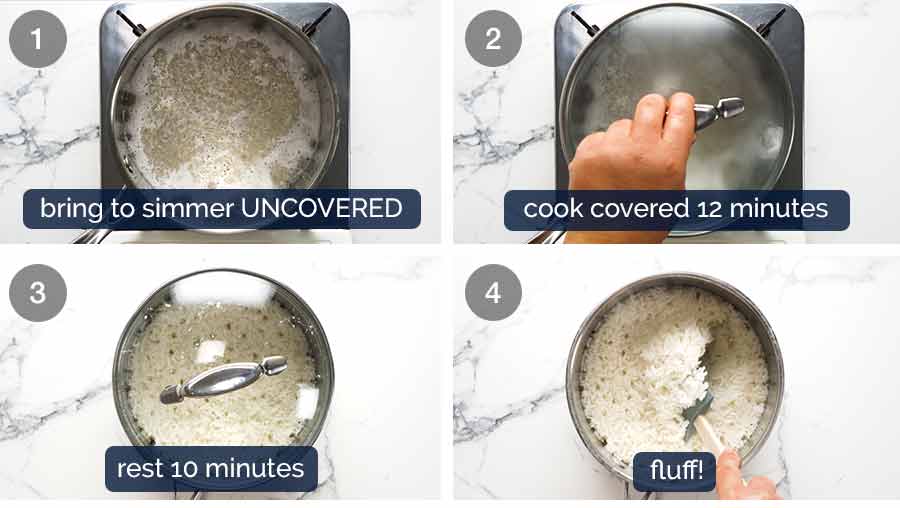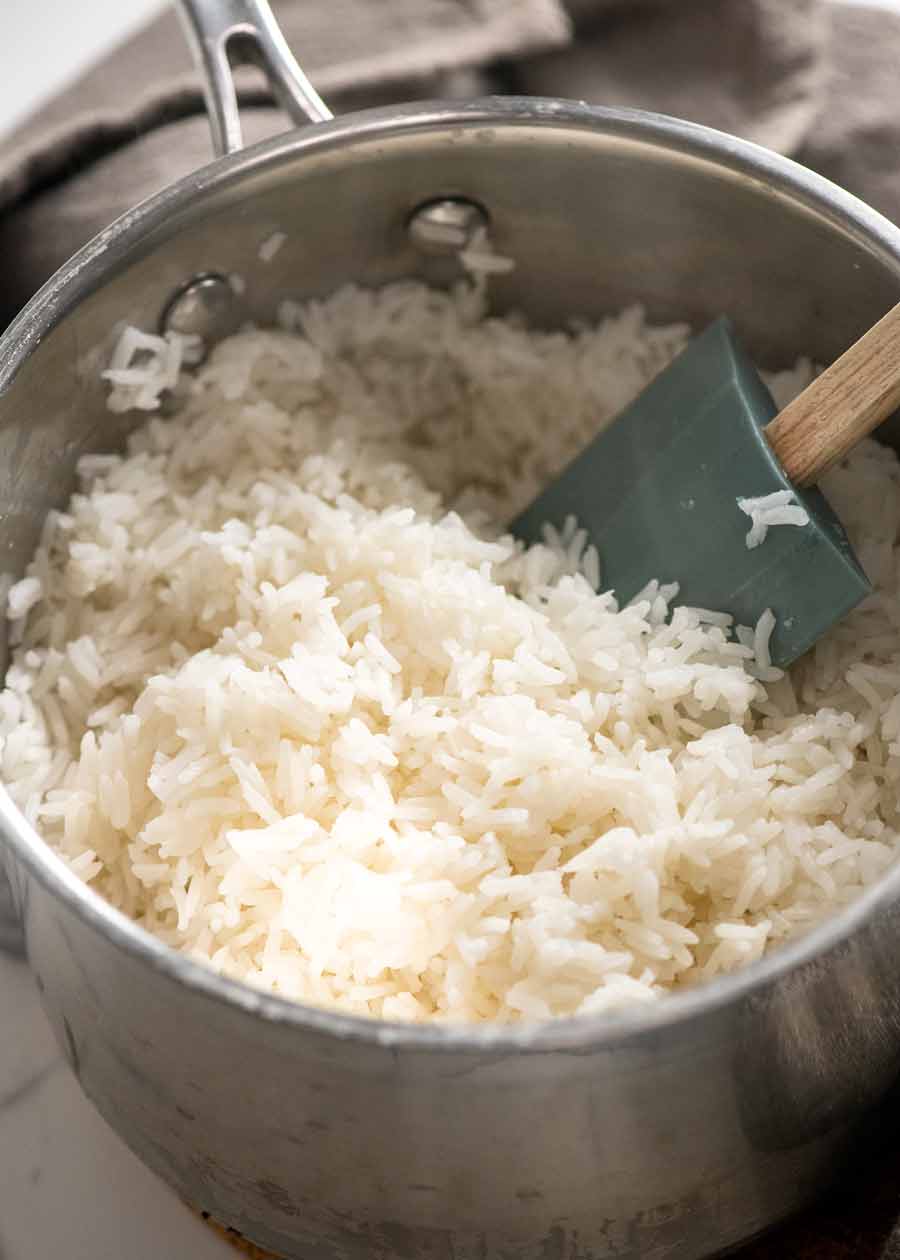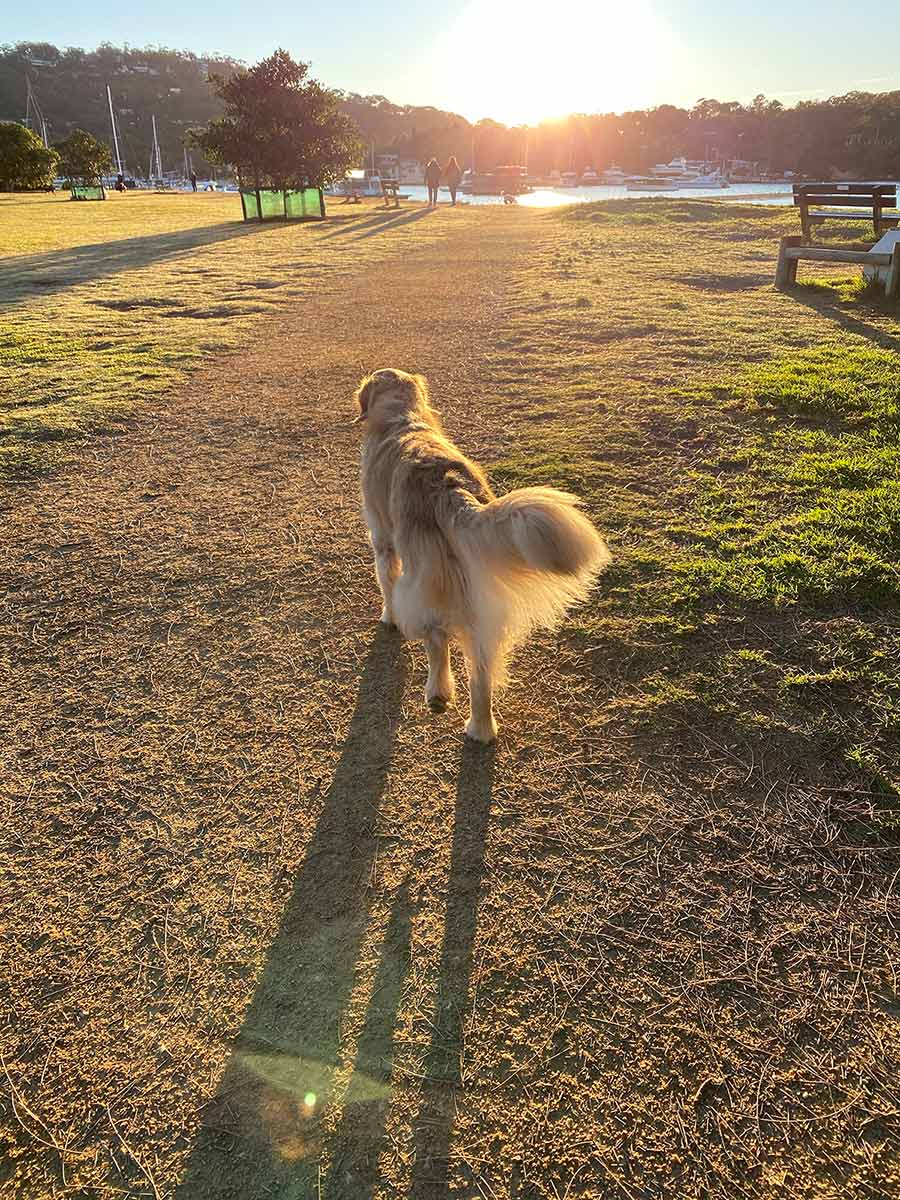Use for all things Thai – and anything really. It’s just a really great rice!
How to cook Jasmine Rice
Jasmine rice is a lovely, subtly perfumed rice used across South East Asia. It’s strongly associated with Thai food, and used for serving with everything from Thai marinated chicken to Chilli Basil Stir Fry, Satay Skewers and the many Thai curries out there. It’s also used to make Thai fried rice and Pineapple Fried Rice which is the other recipe I’m sharing today!
The secret for how to cook jasmine rice perfectly
What most people do not know is that jasmine rice is softer than most white rice, which means you need less water in order for the rice to cook so it’s soft and fluffy, rather than gummy on the outside. So while most rice is cooked with 1.5 cups of water for each cup of rice, for jasmine rice, it’s reduced to 1 1/4 cups of water. Yes, 1/4 cup really makes a difference! I made a lot of overly soft jasmine rice in my life that I was never really happy with until I finally figured this out.
There is NO NEED to rinse rice!!
Busting an age old myth here – that rinsing the rice is mandatory for fluffy rice. NO it is not! I have made so much rice in my time verifying this exact fact. Here’s what I know:
No rinsing – if you use 1 1/4 cups of water for every 1 cup of jasmine rice, your rice will be fluffy even without rinsing If you rinse, you must reduce the water by 2 tablespoons to factor in the extra water than remains in the rice (ie 1 1/4 cups water minus 2 tablespoons) If you rinse AND soak for 1 hour, you must reduce the water by 3 tablespoons (ie 1 1/4 cups minus 3 tablespoons) Rinsing vs no rinsing – rinsing yields a barely noticeable marginal improvement in fluffiness. It would not be noticeable to most people; Only rinse IF you buy your rice direct from a rice farm, or similar, to remove debris and anything that night remain from the processing; and No need to clean if you buy retail – If you buy rice at the store in shiny plastic packets, your rice should already be clean – and that includes less starch too.
Let’s face it. Rinsing rice is a pain. For an extra 2% fluffiness, it’s just not worth it (in my humble opinion). If you need to rinse the rice to clean it, if you just can’t break the habit, or if your Asian mother would have your head if you didn’t, here’s how:
Place rice in bowl, fill with water. Swish with hand then drain. Repeat 3 to 4 times – water will never be completely clear. Drain in colander, cook per recipe.
How to cook Jasmine Rice
Once you get the rice and water ratio right, then the steps are exactly the same as cooking normal white rice and basmati rice:
RAPID SIMMER – Put water and rice in saucepan, bring to simmer on high heat as fast as you can. You want the whole surface to be rippling, the edges bubbling and white foam; COVER and turn to LOW – Turn heat down and cover, cook 12 minutes. Do not lift lid! Stand 10 minutes to let the rice finish cooking. If you skip this, the grains are wet and slightly hard in the middle; Fluff! Use a rubber spatula or rice paddle – this stops the grains breaking (Jasmine rice is softer than most white rices).
And voila! Fluffy Jasmine rice. 🙂
Use for all things Thai, Vietnamese dishes, stir fries, and use for fried rice like Nasi Goreng. Though traditionally associated with South East Asian foods, it will goes perfectly with any Asian foods, and even Indian food if you don’t have basmati rice. And just generally for anything you want to serve with rice, whether Asian or not! – Nagi x
Watch how to make it
Life of Dozer
A common sighting – Dozer trotting off ahead of me to join his friends on the beach. I get there eventually!!

